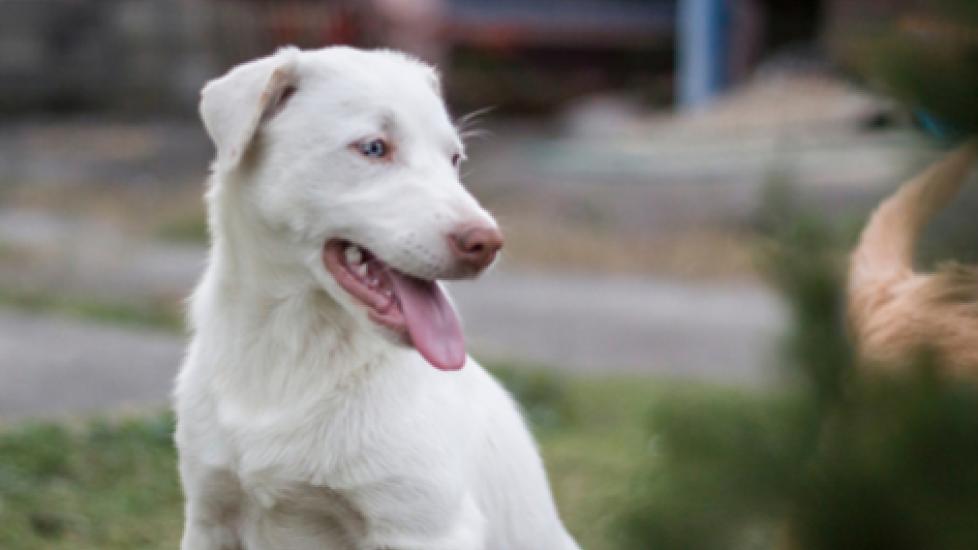Albino Dogs: Interesting Facts You Should Know
By John Plichter
It’s no secret that man’s best friend comes in a variety of shapes and sizes, with assorted traits and features. Spots, coats, eye colors, and skin types all make dogs as unique as human beings. Considering the rarity, albinism in dogs is an especially curious case. Here are a few interesting facts you should know about albino dogs.
They don’t actually have pink eyes
While albinism presents itself as pink irises in albino rabbits and rodents, the same does not apply for dogs. Dr. Stephanie Pumphrey, assistant professor of veterinary ophthalmology at Tufts Cummings School of Veterinary Medicine, notes that the true telltale sign of an albino dog would be lack of pigment around their eyes.
“Most dogs that are considered ‘albino’ have skin that appears pink around their eyes rather than pigmented skin, which can give the eyes a pinkish look,” Pumphrey says. While it is impossible to know whether a dog is a true albino without genetic testing, “most albino dogs will actually have blue eyes and pink noses.” Dogs with white coats and dark eyes or noses can sometimes be confused as albino, but unless they have pink noses and pink skin around their eyes, they are not albino, just white coated.
They’re hard to come by
There are very few true albino dogs. For a dog to be considered albino, he or she must lack the genes necessary to produce melanin, the pigment responsible for skin and hair coloring. There are other coat patterns that can be confused for alibinism, however, such as merle and piebald patterns. These coat patterns result in something similar to albino, and most often occur in Australian Shepherds, Great Danes, Dachshunds, and Collies, to name a few.
“Merle patterning is inherited as a dominant trait, meaning that the dog only needs to receive a copy of the merle gene from one parent in order to have a merle coat,” Pumphrey notes. Albinism occurs more often when dogs have two copies of a recessive gene, she says, which will cause the characteristics of albinism.
They’re at higher risk for health issues
Having two copies of the merle gene known for causing albinism can also lead to other genetic deformities. Dr. Margaret Casal, associate professor of medical genetics at the School of Veterinary Medicine at the University of Pennsylvania, advises that albino dogs come with higher risk of numerous health issues. “Similar to humans, dogs who suffer with albinism are sensitive to light and can develop skin cancer,” Casal says. “Any kind of bumps, non-healing sores, or other changes in their skin should be monitored and made aware of during your next vet visit.”
Aside from light sensitivity, Pumphrey also adds that albino dogs are especially prone to unfixable eye abnormalities. “Aside from possibly being born with abnormally small eyes, deformities of the lens, iris, sclera, and other parts of the eyes are common,” Pumphrey says. “Compared to other dogs, they can have poor vision or even be blind from birth.”
They require extra care
With a higher risk of health issues, albino dogs may require some different care guidelines than typical dogs. “Since they lack pigment in their skin, and have no protection against ultraviolet rays, it’s probably a good idea to keep their coat as long as possible,” Casal says. “Any time they have to go outside in bright sunlight, sunscreen or even an extra coat should be considered for protection.”
Given their susceptibility to light sensitivity and ocular issues, Pumphrey agrees that making sure their eyes are adequately protected is probably a good idea. “While we don’t have evidence that dogs with albinism are prone to cancers around the eyes like in cats and horses, sun exposure should be limited,” Pumphrey advises. “Besides dressing them in protective coats or clothes, sunglasses and goggles can be considered.”
